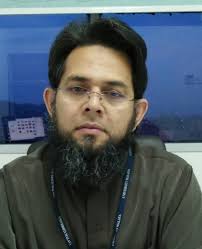[column-sneeit-shortcode-enable-nested-0 class=”” width=”75″ padding=”” sticky_inside=””][/column-sneeit-shortcode-enable-nested-0]
Prof. Dr. Mohammad Tariqur Rahman,
Faculty of Dentistry, University of Malaya; President, Malaysian Society of Oral Immunologists and Oral Microbiologists; Executive Editor, Annals of Dentistry University of Malaya
_______________________________________________________________________________
People in the past used to debate on naming the best university in the world – if it is Harvard, Oxford or Cambridge. Right or wrong, academic and research institutions were thus ranked long before any quantitative approach of ranking was adopted, such as by Times Higher Education (THE) or Quacquarelli Symonds (QS). Although being riddled due to a number of methodological and ethical concerns, THE or QS university rankings are increasingly becoming popular and pervades moulding policy decisions in higher education.
Despite having different methodologies, different ranking bodies use similar quantitative approaches to evaluate the impact of a university in terms of teaching and research using a number of predetermined indicators. The common indicators include reputation in teaching, staff (academic)-student ratio, doctoral-bachelor student ratio, number and citation counts of papers published by the staff, the proportion of international staff and students, international collaboration, and last but not least knowledge transfer for industrial or societal application. The last one is of particular importance in the current era of industrial revolution 4.0. The ranking bodies collet data and information of these indicators from various sources such as independent or government databases; database of the institution; and a survey involving students, alumni, employers and related stakeholders.
Given the need to score independently for each of those indicators for a reasonable overall ranking, a university in Bangladesh is most likely to embrace one or more of the following challenges.
1. The outputs of teaching and research mostly depend on the faculty members of a university; hence the first challenge is to have a qualified pool of academic and research staff. While a qualified lecturer is able to offer a quality teaching as well as contribute to impactful research, an overloaded qualified lecturer can be counterproductive. Therefore, both the track record of the lecturers and their number will eventually determine the fate of the university in the ranking.
2. The second major challenge would be the lack of availability of resources and infrastructure for a qualified lecturer to transform and translate their potential in teaching and research.
3. Unlike in the past, institutions of tertiary educations currently are not only meant to generate fundamental knowledge but also the products that are beneficial to society and the nation. Importantly, this is also a significant indicator of university ranking. Hence, the lack of impactful industrial and societal application based research projects might be the third major challenge.
4. A common perception in many universities in Bangladesh is that they have a reasonable performance in teaching and research. However, the lack of accessibility to all the information on their performance constitutes the fourth major challenge to achieve a higher ranking.
5. The fifth major challenge for a university in Bangladesh would be the lack of international academic staff and students. Given the reality that Bangladesh is a tremendously overpopulated nation, and does not have a lack of indigenous experts, recruiting foreign experts might need critical analyses.
Whether an institution voluntarily participates in the global ranking scheme, it will inevitably be ranked, like it or not. Hence the prudent way is to be prepared to be ranked and be ranked as one of the top institutions in the region, if not globally. Following strategies might be helpful for a university in Bangladesh to consider for their action plans to achieve a higher ranking.
1. Since the major indicators in university ranking are based on teaching and research, recruiting qualified individuals as academic staff having at least PhD degree with a track record in research and dynamic personality should be emphasized as selection criteria.
2. Offering science and technology-based postgraduate programs might be useful to address the need to have a higher ratio of postgraduate students compared to undergraduate (bachelor) students. This will increase the potential to develop more research-based products.
3. Along with governmental support, universities should consider developing industrial linkage to build their infrastructure for research facilities. This university-industrial marriage can offer a win-win situation. This will allow the universities to build infrastructures to run their research projects while the industry will have research-based novel products to run their business. Royalty from the research-based commercialized products will also contribute to the revenue generation for the university.
4. All universities should have dedicated webpage for each academic and research staff with the information on their academic degrees; list of publications; contribution to the university, society, and nation; list of research grants; list of products that are developed and patented by the staff; and link to one or more of the databases such as Scopus, ResearchGate, ORCID, Publons (currently merged with ResearcherID). Having a profile in these databases is essential to know the research impact generally counted by the number of citations received by the papers published by any individual.
5. The staffs who are working in institutions outside the country with study, sabbatical or any other leave should add their affiliation in the home country in all their publications or presentations.
6. All university might consider opening a centralized research management and commercialization centre to facilitate academic staff to find potential research funds from various sources including from abroad and manage the necessary legal actions for any potential commercialization of research-based products.
7. Universities in Bangladesh might consider following the practice of universities in many developed countries to recruit expert academic and research staff from war and poverty-stricken countries. At the same time, Bangladeshi expatriates could also be considered for their voluntary (or paid, if necessary) affiliation with universities in Bangladesh for part-time teaching and research consultations.
It might not be possible to change the current state of lower standing of Bangladeshi universities, including the most reputed ones such as Dhaka University and BUET, in the global ranking. Yet effective planning might change the scenario in the near future. To be par with their regional or global counterparts, universities in Bangladesh need to achieve higher scores for each indicator that are used by the ranking systems. However, having higher performance according to each indicator will not be enough unless the information on how an institute is performing for each indicator is available for evaluation by the ranking bodies.
Needless to say, once achieved the desired ranking, the next major challenge for any university is to sustain the rank or going higher in subsequent years. That makes the first challenge, i.e., having a qualified pool of academic and research staff, be addressed prudently at all time. This is simply because the academic and research staff constitute the vital force of any academic and research institution.
Biography: Prof. Tariq served as a faculty member of Khulna University and founding Chairman of Department Pharmacy at EWU (Dhaka). After serving a decade at International Islamic University Malaysia, Prof. Tariq is currently working at University of Malaya, which is ranked 87th in QS ranking of world universities.


